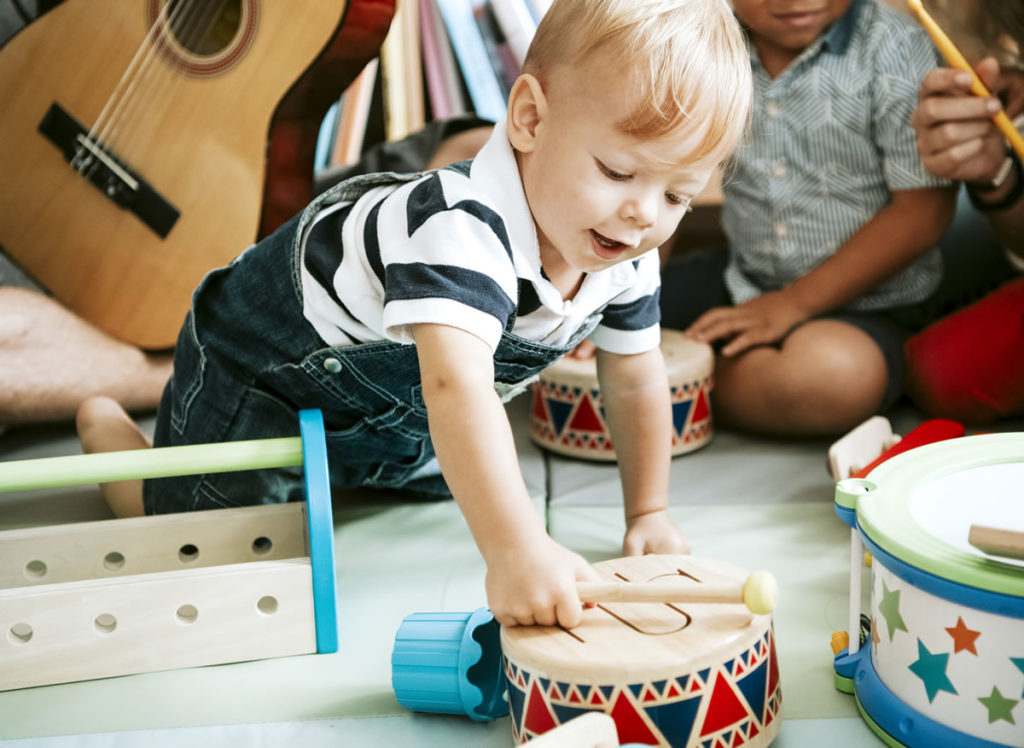Before starting with the strategies to introduce music in the classroom, even in other types of subjects and subjects other than music specifically, it is necessary to be clear about some of the most important benefits that music can bring to human beings humans, and especially the little ones:
- Musical activities are developmentally appropriate for the child, improving their interest in language, enhancing body movement , brain attention to patterns and rhythms, voice response to sounds, as well as associated hand-eye coordination. with the act of playing musical instruments.
- Music engages the brain while stimulating neural pathways associated with higher forms of intelligence , such as abstract thinking, empathy, and mathematics.
- The melodic and rhythmic patterns of music provide exercise to the brain and help develop memory.
- Music is an auditory art and young children are excellent auditory learners . Since the ears are fully mature before birth, babies begin to learn sounds from their surroundings even from the gut.
- Music is perfectly designed to train children’s listening skills, a fundamental skill for learning and academic and vital progress.

The benefits, in short, are such that music becomes an ideal learning vehicle for almost any type of classroom worthy of putting into practice by teachers and professors without any fear of making mistakes.
Strategies for Introducing Music to the Classroom
First of all, you should keep in mind that we all identify with music in some way, and of course children too. Of course, the usual and ideal is for the little ones to listen to songs appropriate to their age : lullabies, songs and melodies from animation series and movies … If you start by teaching something that is familiar to them, your class will respond immediately.
Any song with repeat will be easier for you and your class. Songs with too many words do not work, unless in this practice you want to be the soloist and only participant. Songs composed in “canon” also have excellent results for children, as they are very fun and promote full group participation. You can even be creative and change the words, for example, if you are close to snack or lunch time, you could introduce phrases like “we are hungry” or something similar that relaxes the class and makes the kids smile. You can also ask the children to suggest the foods that should be part of the song, because of their enormous vitamins, because of how good they are… These types of songs will generate so much participation dynamics that they can easily fill an entire class. If it is not what you are looking for because your class is not music, introduce the songs before the class begins , to disconnect from the previous class and start on the right foot, or sing it at the end of it, so that the children can have a state of complete disconnection before moving on to the next class or recess.
When you make the musical moment part of your class routine, you’ll be on your way to including other songs to learn. You can teach the class your favorite song or ask students to sing and show others their special songs. You will be surprised and have a lot of fun with the results! You can also suggest inventing songs, because apart from promoting teamwork with it, you will get them to develop their imagination and enhance their creativity. If you also modify the activities so that the class never knows what is next, you will keep the students excited.
Rhythm to relax and concentrate better
Remember that the dynamics of introducing music in the classroom, especially when it is not in the music subject itself, is intended to be a help for children to disconnect, either at the beginning or at the end of the class. Let’s not forget that students need to move , especially when they are very young, and therefore introducing music in any type of class is very positive and beneficial for children. Teaching a simple dance or having students jump or clap to the beat of a song will avoid any discipline problems. Even tapping a table rhythmically along with the music can be a lot of fun, as long as you also teach a signal to start and stop when you see fit.

That children need to move or jump during a song is a natural and a happy reaction to the beat. If you are going to stop them, it is better not to do these dynamics, because they may be afraid to respond in the future when you ask them. Letting off steam and removing tension with dynamics of music and movement is a very good practice to get the rest of the class, or the next one, much more relaxed and calm.
When it is time to finish the music, especially if you decide to introduce the music at the beginning and not at the end, remember to end with a calmer song or gradually decrease the rhythm of it until it ends in a whisper. This will be a good sign perceived by the little ones that class is beginning and that they have to go into silence and concentration. Then your class will calm down and be ready to move on to the next lesson.












































































































Good morning, super interesting the subject on music.